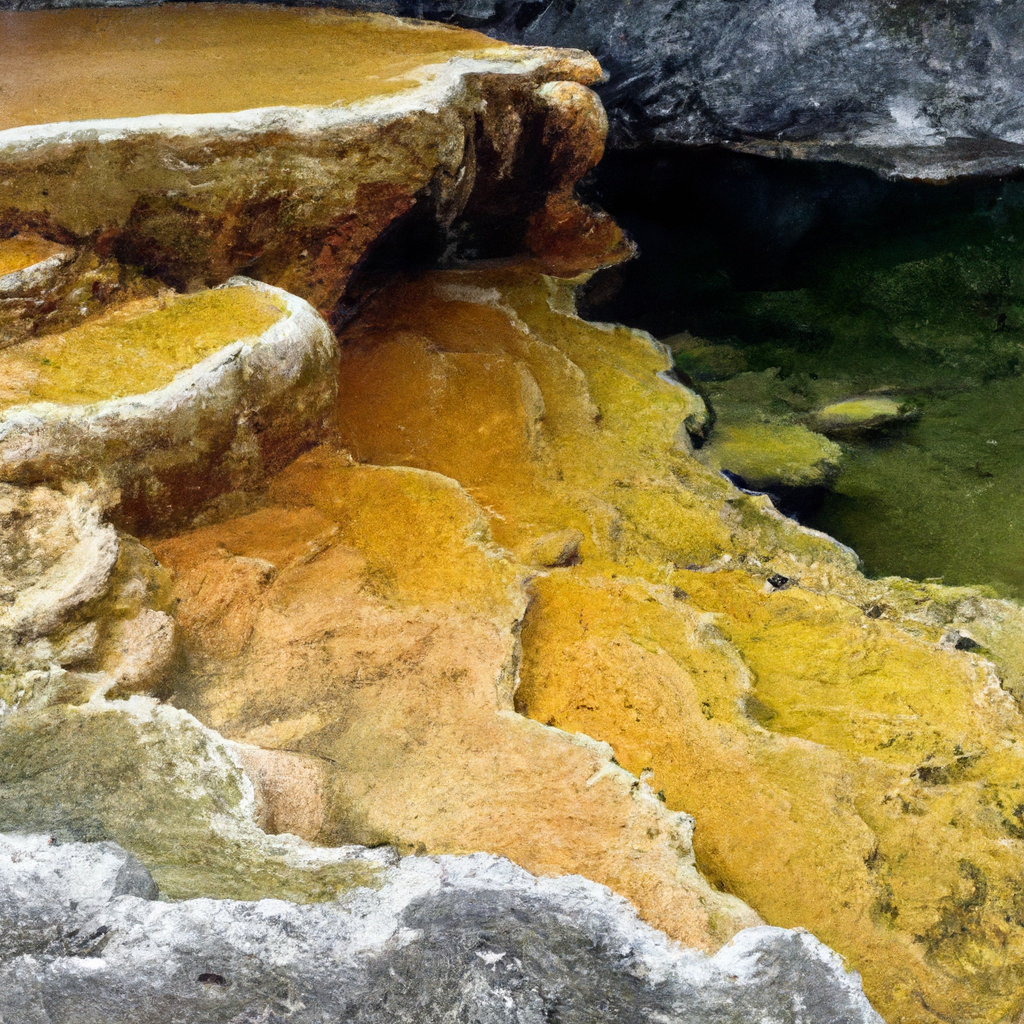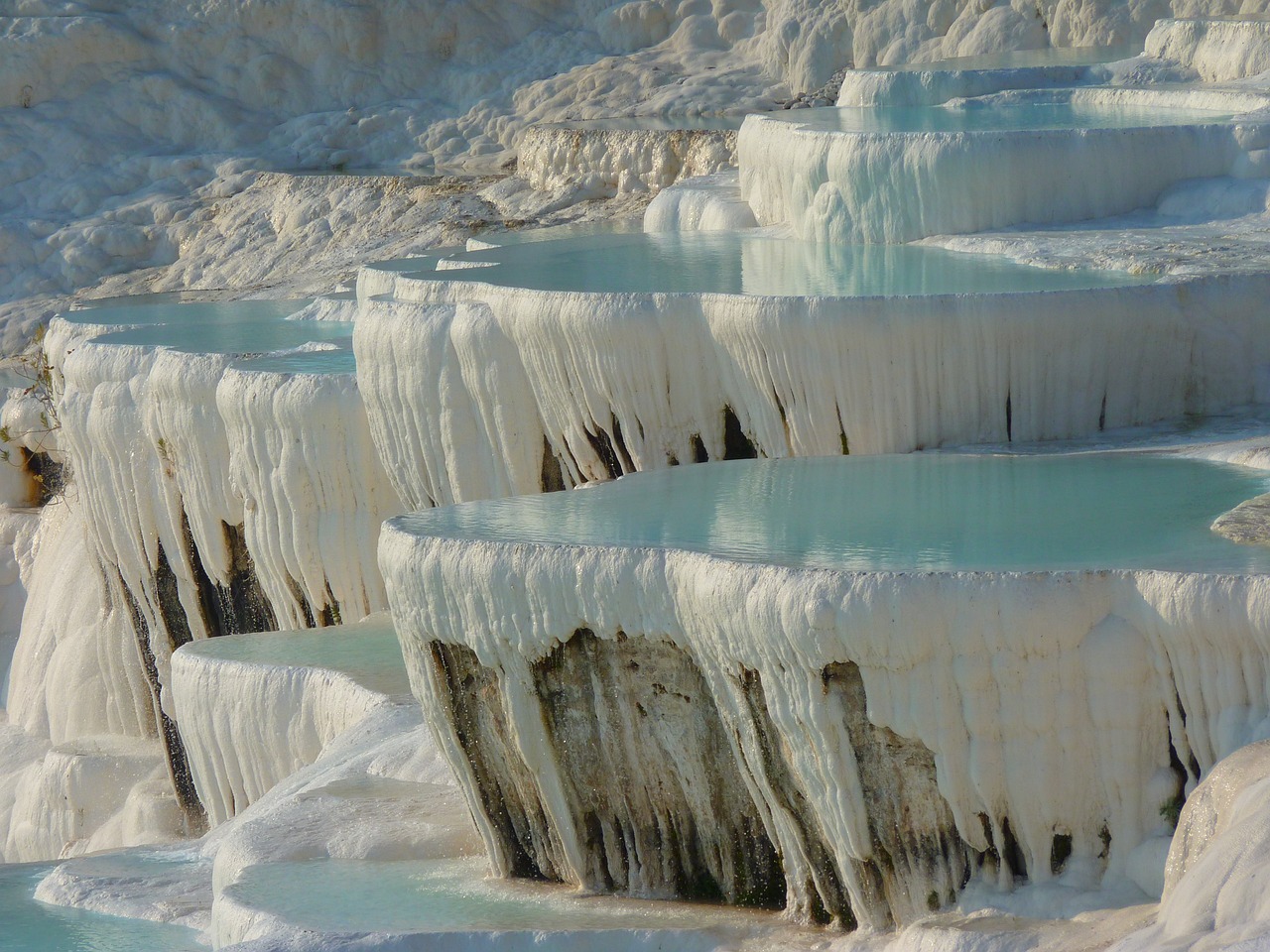Hey there, curious reader! Get ready to dive into the fascinating world of hot springs as we explore the geology behind these natural wonders. Have you ever wondered how these soothing, steamy pools of water come to be? Well, wonder no more! In this article, we̵7;ll uncover the secrets behind the formation of hot springs, exploring the intricate geological processes that create these geothermal marvels. So grab a cup of tea, sit back, and prepare to be amazed by the incredible forces of nature that give birth to these therapeutic oases.

Formation of Hot Springs
Introduction to hot springs
Hot springs are natural phenomena that have captivated humans for centuries. These unique geological formations are sources of therapeutic waters, often enjoyed for their relaxing properties and healing benefits. But have you ever wondered how hot springs actually form? In this article, we will explore the fascinating geology behind hot springs and uncover the processes that contribute to their creation.
What causes hot springs to form?
Hot springs are a result of water being heated deep within the Earth’s crust, rising to the surface and emerging as springs with elevated temperatures. The key factor responsible for the formation of hot springs is geothermal energy, which stems from the heat generated by the Earth’s core. This geothermal energy provides the necessary warmth to elevate the temperature of the groundwater present in underground aquifers.
Importance of geology in hot spring formation
Geology plays a fundamental role in the formation of hot springs. The composition and structure of the surrounding rocks and sediment layers directly influence the movement of groundwater and allow for the accumulation of heat. Geologists study the underlying geology of an area to understand the potential for hot spring formation and to predict their locations. By analyzing geological features, fault lines, and fracture systems, geologists can gain insights into the intricate processes that give rise to hot springs.
Geothermal Energy
Explanation of geothermal energy
Geothermal energy refers to the heat stored within the Earth that can be harnessed for various purposes, including the formation of hot springs. This energy arises from the radioactive decay of minerals deep within the Earth’s core, coupled with the residual heat from its formation. Geothermal energy is a renewable and sustainable source of heat, making it an important component in the creation and maintenance of hot springs.
Heat sources for hot springs
Hot springs rely on localized heat sources to elevate the temperature of groundwater. One significant contributor to this heat is the proximity to volcanic activity. Magma, or molten rock beneath the Earth’s surface, exerts intense heat on the surrounding rocks and can elevate the temperature of groundwater. In addition to volcanic activity, geothermal heat can also originate from the Earth’s internal heat flux and the presence of geologically active regions.
Role of magma in geothermal activity
Magma plays a crucial role in geothermal activity and subsequently influences hot spring formation. As magma rises towards the surface, it heats and alters the surrounding rocks, creating pathways for groundwater flow. If these pathways intersect with existing aquifers, heated water from the magma can mix with cooler groundwater, resulting in the formation of hot springs. Magma also contributes to hydrothermal systems, where hot fluids circulate through fractures and faults, further influencing the creation of hot springs.
Aquifers and Water Circulation
Definition of aquifers
Aquifers are underground rock formations or layers of permeable material that contain water. These water-bearing geological formations act as natural reservoirs, storing and transmitting groundwater. Aquifers play a vital role in hot spring formation as they provide the medium through which heated water can circulate and eventually reach the surface. The permeability and porosity of rocks within an aquifer determine the rate and direction of groundwater flow.
Types of aquifers associated with hot springs
There are several types of aquifers associated with hot springs, including confined aquifers and unconfined aquifers. Confined aquifers are bounded by impermeable layers, preventing water from freely flowing in or out. This confinement increases pressure within the aquifer and can cause water to rise to the surface as hot springs under the influence of geothermal energy. In contrast, unconfined aquifers have permeable layers above and below, allowing water to flow more freely and potentially emerging as hot springs.
Circulation of water underground
The circulation of water underground is a complex process influenced by geology and hydrological factors. Water enters aquifers through infiltration, percolating through the spaces between rocks and sediments. This groundwater movement can be enhanced by fractures and faults, which act as conduits for the flow of water. As this water encounters heat sources, such as magma or geothermal gradients, it absorbs heat and rises back towards the surface, resulting in the formation of hot springs.
Faults and Fractures
Explanation of faults and fractures
Faults and fractures are geological features characterized by the breaking and displacement of rocks along planes. Faults occur when rocks on either side of a fracture move relative to each other, while fractures refer to cracks or breaks in rocks without significant displacement. These features are essential in hot spring formation, as they create pathways for groundwater circulation and allow for the migration of heated water towards the surface.
Role of faults in hot spring formation
Faults can play a significant role in the formation of hot springs by both facilitating the circulation of groundwater and providing channels for heated fluids to reach the surface. When heated water flows along a fault, it encounters lower pressure zones and fractures, causing it to rise towards the surface as a hot spring. Faults also create localized zones of weakness in the surrounding rocks, making it easier for water to permeate and subsequently heat up in the presence of geothermal energy.
Fracture systems and their connection to hot springs
Fracture systems, consisting of interconnected cracks and breaks in rocks, are closely associated with hot springs. These fracture systems can act as conduits for groundwater flow, providing paths for heated water to reach the surface. The presence of fractures enhances water permeability and enables the migration of geothermal fluids. As a result, hot springs often occur in areas with extensive fracture systems, allowing for the efficient transfer of geothermal heat to the surface.
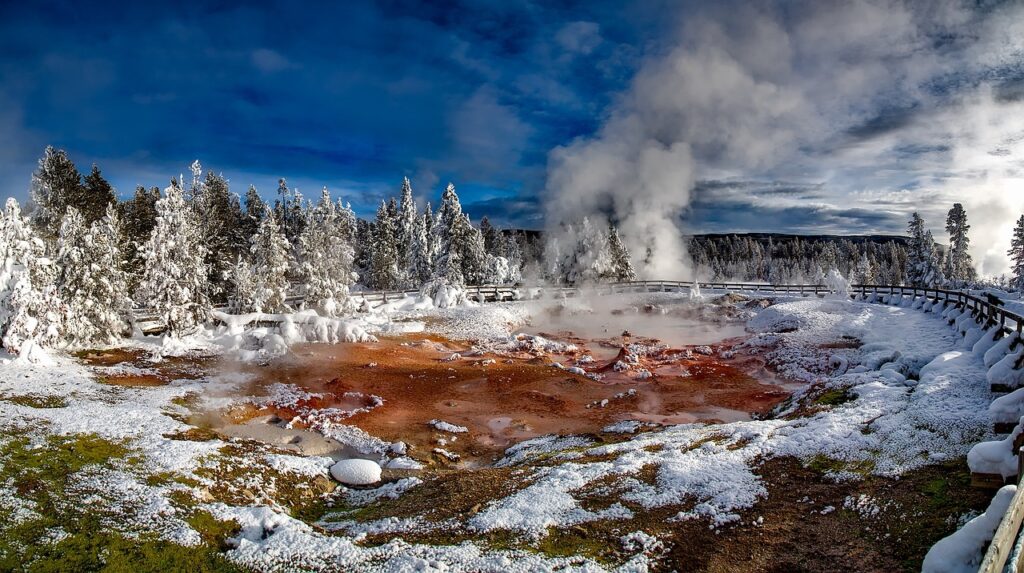
Volcanic Activity
Volcanic processes and their impact on hot springs
Volcanic activity significantly influences hot spring formation due to its associated geological processes. Volcanoes release magma and volcanic gases, such as water vapor, carbon dioxide, and sulfur dioxide. As magma rises, it interacts with surrounding rocks, altering their composition and creating hydrothermal systems. This alteration and the release of volcanic gases contribute to the heating of groundwater and the formation of hot springs in volcanic regions.
Hydrothermal alteration in volcanic areas
Hydrothermal alteration is a process that occurs in volcanic areas, where hot water interacts with rocks, minerals, and gases. As geothermal fluids circulate through the Earth’s crust, they react with volcanic rocks, leading to chemical changes and the formation of new minerals. This hydrothermal alteration contributes to the unique characteristics of hot springs found in volcanic regions, where the mineral-rich waters can possess therapeutic properties.
Geothermal manifestations near volcanoes
Hot springs commonly occur in proximity to volcanoes, as volcanic activity creates an ideal environment for their formation. The heat generated by magma and the intense geothermal gradients associated with volcanic regions contribute to the availability of geothermal energy. Volcanic eruptions can also create new fractures and faults, enhancing the pathways for heated fluids to reach the surface. These geothermal manifestations near volcanoes attract visitors seeking both the beauty of volcanic landscapes and the rejuvenating properties of hot springs.
Hydrothermal Systems
Overview of hydrothermal systems
Hydrothermal systems refer to subsurface geological regions characterized by the circulation of hot fluids and the associated geothermal processes. These systems are prevalent in areas of volcanic activity and are closely related to the formation of hot springs. Geothermal fluids circulate through fractures, faults, and permeable rocks, absorbing heat along the way. These heated fluids rise towards the surface and give rise to hot springs, creating unique hydrothermal environments.
Hot spring reservoirs
Hot spring reservoirs are the underground sources of heated water that ultimately feed hot springs. These reservoirs are typically located at different depths, depending on the geology and hydrology of the area. The heated water within these reservoirs is replenished through the recharge of groundwater, which allows for a continuous flow of geothermal fluids. Understanding the dynamics and characteristics of hot spring reservoirs is crucial in managing and harnessing geothermal energy for various purposes.
Characteristics of geothermal fluids in hot springs
Geothermal fluids found in hot springs possess distinct characteristics that set them apart from ordinary groundwater. These fluids often contain dissolved minerals, such as silica, calcium, and sulfur compounds, giving the waters their unique color and sometimes even their therapeutic properties. The temperature and chemical composition of geothermal fluids can vary depending on the geology of the area, the depth of the reservoir, and the presence of different hydrothermal processes.
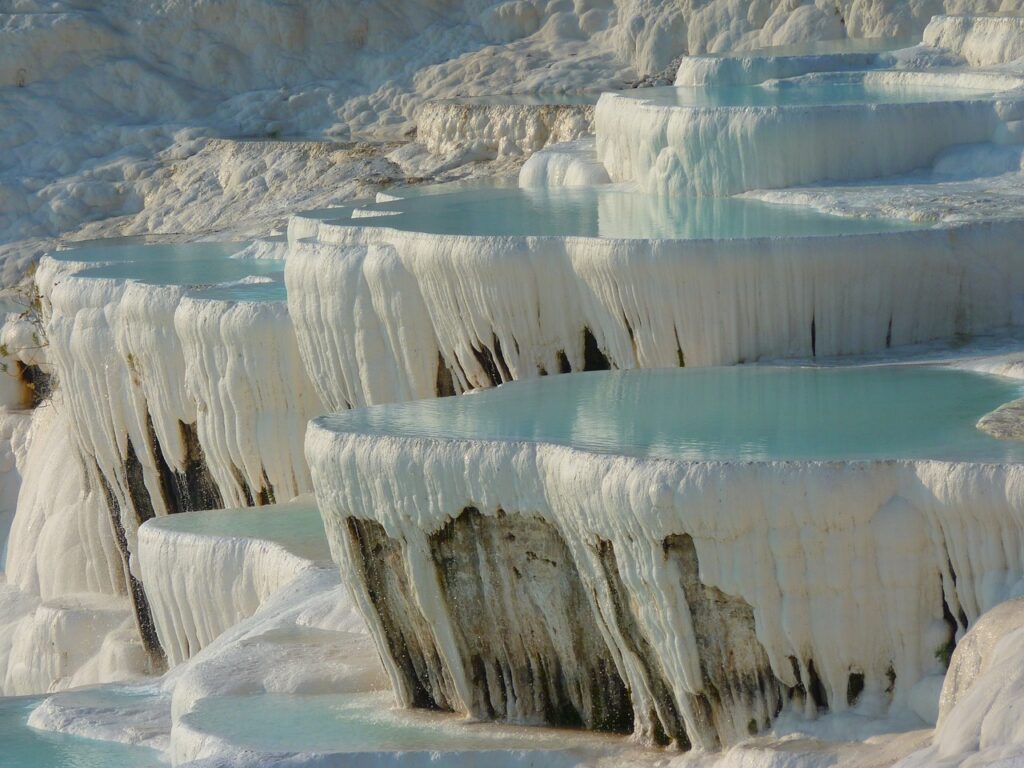
Hot Spring Types
Overview of different types of hot springs
Hot springs come in various forms, each with its own unique characteristics and geological features. One common type of hot spring is known as a “pool spring,” where the heated water collects in a pool or basin. Another type is a “fumarole,” which refers to steam vents that release vapor and gases without a substantial amount of water. “Mudpots” are hot springs that contain a high concentration of mud or clay, while “geysers” are characterized by periodic eruptions of boiling water and steam.
Geothermal features associated with hot springs
Hot springs are often accompanied by distinct geothermal features that add to their allure and uniqueness. These features can include terraces of mineral-rich deposits, colorful bacterial mats, and the presence of steam vents or steam plumes. Geothermal features are a result of the interaction between geothermal fluids, their chemical composition, and the environmental conditions of the surrounding area.
Examples of famous hot springs
Hot springs have captivated humans throughout history, resulting in the development of famous locations renowned for their thermal waters. One such example is the iconic geothermal area of Yellowstone National Park in the United States. Renowned for its striking geysers, hot springs, and colorful thermal pools, Yellowstone showcases the natural beauty and geothermal power that hot springs possess. Other notable hot spring destinations include the Kenai Peninsula in Alaska, the Blue Lagoon in Iceland, and the Rotorua region in New Zealand.
Chemical Composition of Hot Springs
Dissolved minerals and gases in hot springs
Hot springs exhibit a distinct chemical composition due to the dissolution of minerals and the presence of gases. As geothermal fluids percolate through rock formations, they extract minerals from the surrounding rocks, resulting in dissolved mineral content in the hot springs. Common minerals found in hot springs include silica, calcium carbonate, sulfur compounds, and various trace elements. Additionally, hot springs often contain dissolved gases such as carbon dioxide, hydrogen sulfide, and sometimes even radon.
Factors influencing chemical composition
Several factors influence the chemical composition of hot springs, including the geology of the area, the types of rocks present, and the mineralization processes occurring deep underground. The temperature and pressure conditions, as well as the residence time of geothermal fluids within the aquifer, can also influence the chemical constituents of hot springs. These factors play a crucial role in determining the overall composition and unique properties of hot spring waters.
Effects of geology on water chemistry
Geology plays a significant role in shaping the chemical composition of hot springs. The types of rocks present in the aquifer contribute various minerals to the groundwater as it circulates through fractures and fissures. These dissolved minerals give hot springs their distinctive characteristics and can lead to the formation of visually striking mineral deposits, such as travertine and silica sinter. The geology of an area directly influences the water chemistry of hot springs and contributes to their therapeutic qualities.
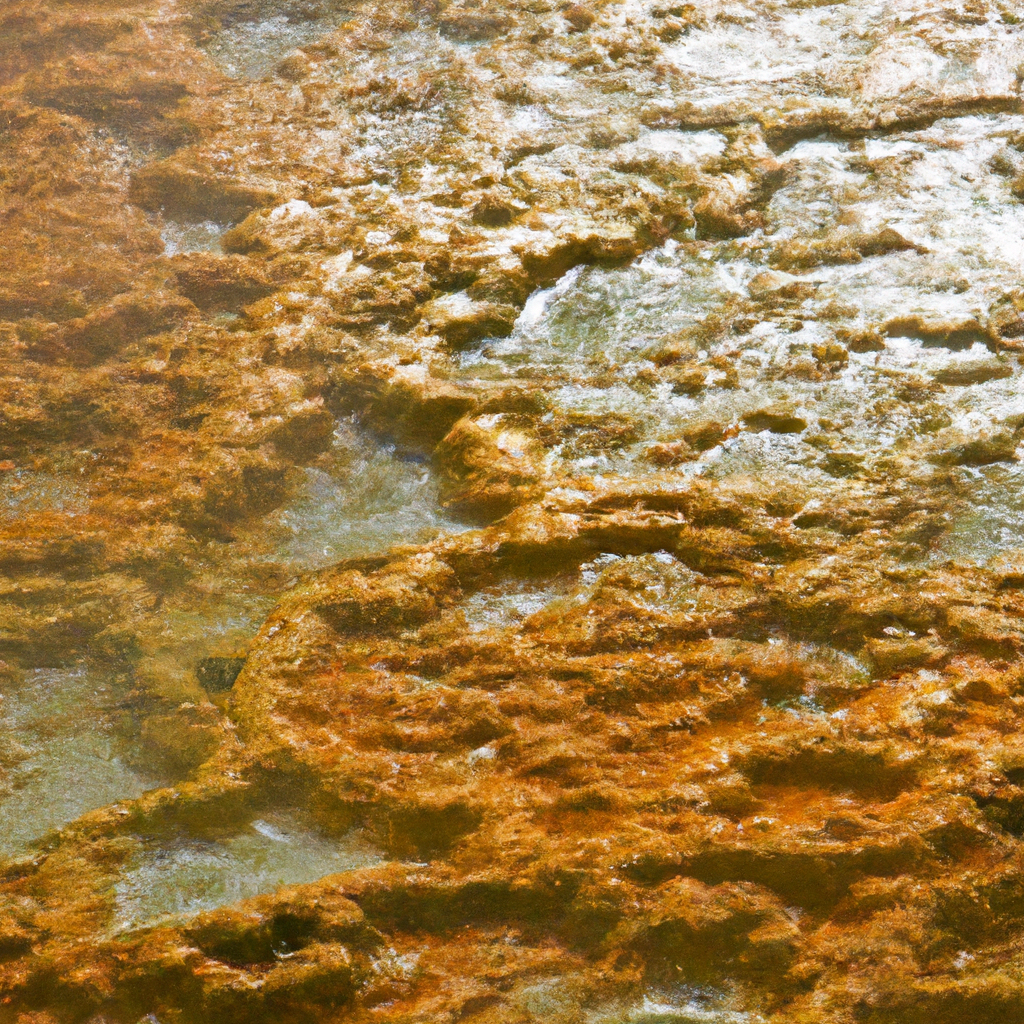
Hot Spring Deposition
Explanation of hot spring deposition
Hot spring deposition refers to the process in which dissolved minerals in geothermal fluids precipitate and form solid deposits. When geothermal fluids reach the Earth’s surface through hot springs, they come into contact with the atmosphere, causing changes in temperature and pressure. As a result, the solubility of minerals in the fluids decreases, leading to precipitation and the subsequent formation of mineral deposits.
Formation of travertine and silica sinter
Two common types of mineral deposits associated with hot spring deposition are travertine and silica sinter. Travertine is a form of limestone that accumulates when calcium carbonate, dissolved within hot spring waters, precipitates and solidifies over time. Silica sinter, on the other hand, is formed by the precipitation of silica (silicon dioxide) in high-temperature geothermal environments. Both travertine and silica sinter contribute to the creation of visually stunning geological formations in and around hot springs.
Importance of mineral precipitation in hot springs
Mineral precipitation plays a vital role in the formation and maintenance of hot springs. As dissolved minerals are deposited, they accumulate and build up over time, shaping the physical characteristics of the hot spring. Mineral deposits can form terraces, cascades, or even encrust the surrounding rocks, creating visually appealing landscapes. The continuous precipitation of minerals in hot springs ensures the longevity and sustainability of these geological wonders.
Geological Indicators
Geological features indicating potential hot springs
Geological features can provide valuable indicators for identifying potential hot spring locations. One such feature is the presence of surface expressions, such as pools of warm water or steam rising from the ground. Geological mapping can also reveal fault lines, fractures, or fissure systems that could serve as conduits for heated fluids. Additionally, the types of rocks and their susceptibility to alteration and mineralization are crucial indicators for predicting the existence of hot springs.
Geophysical methods for locating hot springs
Geophysical methods are utilized in the search for hot springs and complement geological investigations. Techniques such as resistivity surveys, thermal imaging, and ground-penetrating radar can help identify subsurface structures and variations in temperature. These methods provide insights into the hydrological and thermal characteristics of the underground systems, aiding in the determination of potential hot spring locations.
Role of geology in predicting hot spring locations
Geology plays a significant role in predicting hot spring locations by providing valuable information on the subsurface conditions, such as the presence of aquifers, fault lines, and fracture systems. By understanding the geological context of an area, geologists can identify potential pathways for heated fluids and assess the likelihood of hot spring formation. The interplay between geology, hydrology, and geothermal activity provides the foundation for predicting and locating hot springs, allowing for the conservation and sustainable utilization of these natural wonders.
With a deeper understanding of the geology behind hot springs, we can better appreciate the intricate processes that shape these natural phenomena. From the formation of aquifers to the deposition of minerals, hot springs are a testament to the dynamic nature of our planet’s geology. So the next time you visit a hot spring, take a moment to marvel at its geological origins and appreciate the fascinating intricacies that make each hot spring a unique and captivating natural wonder.
